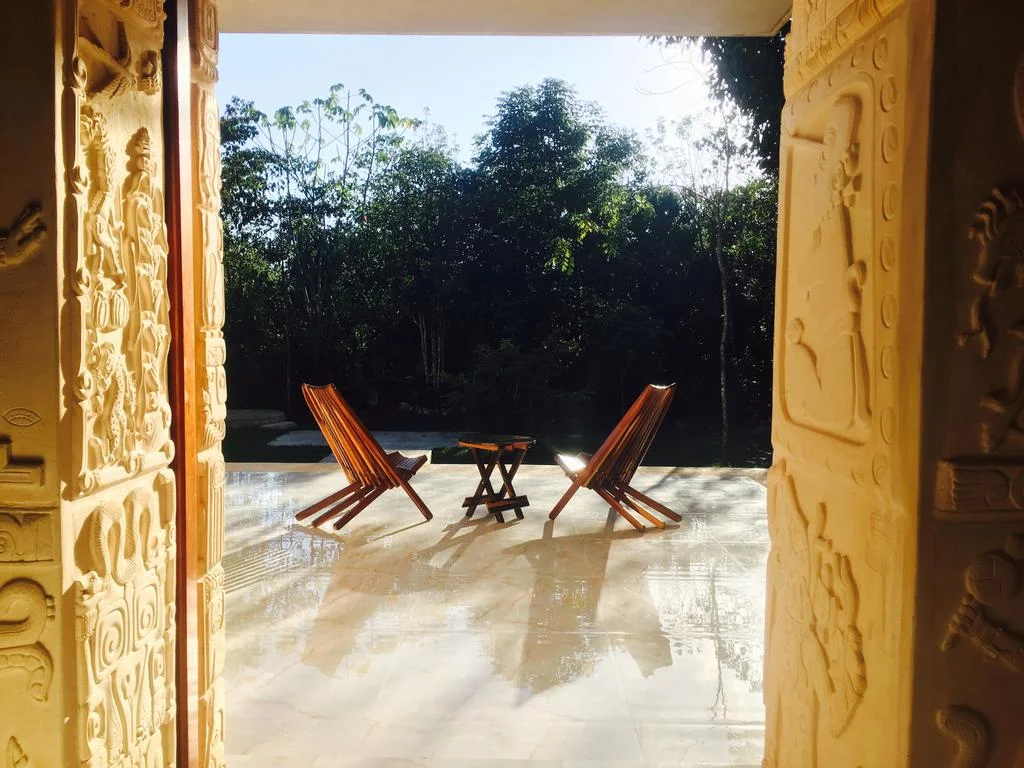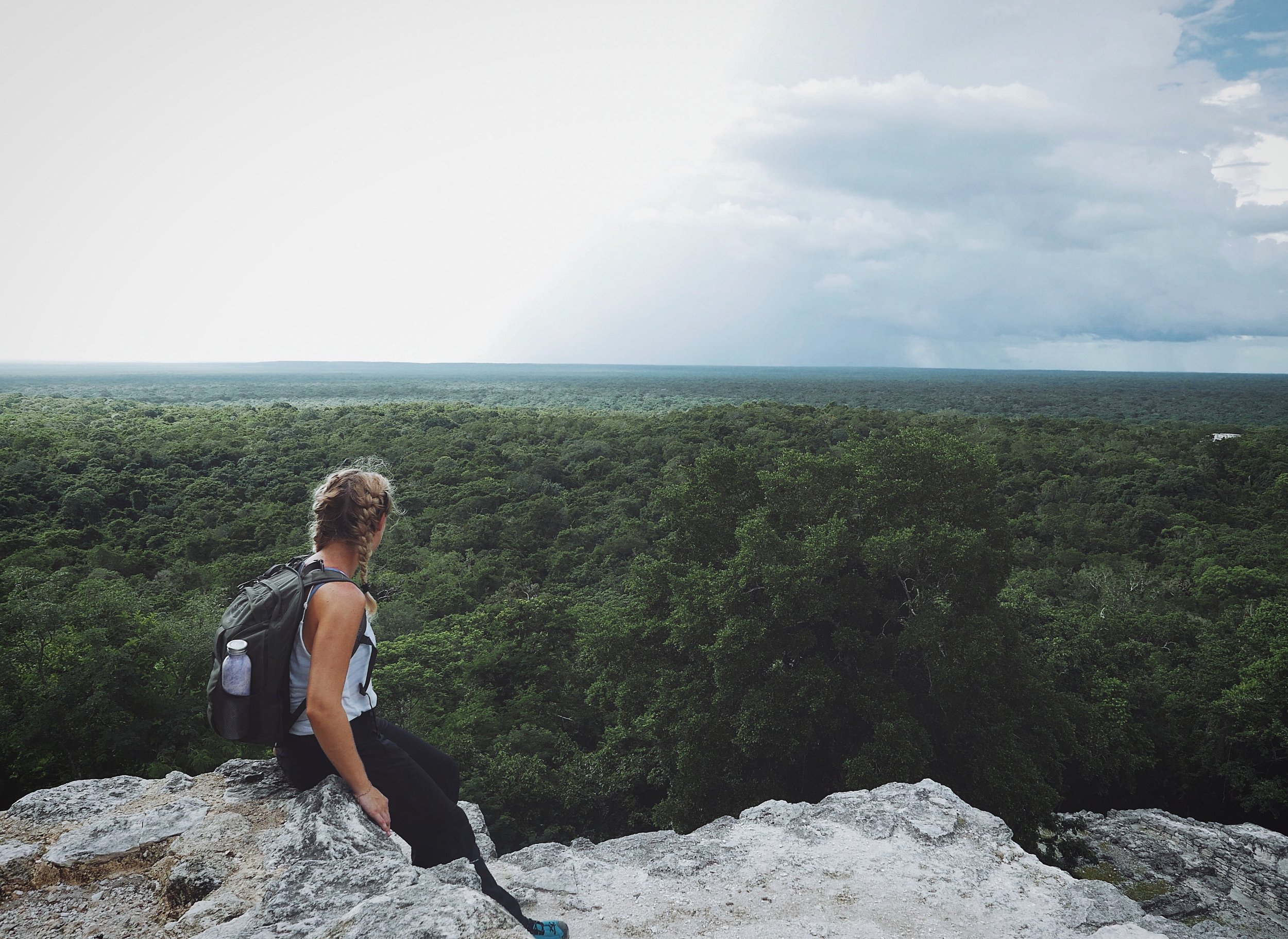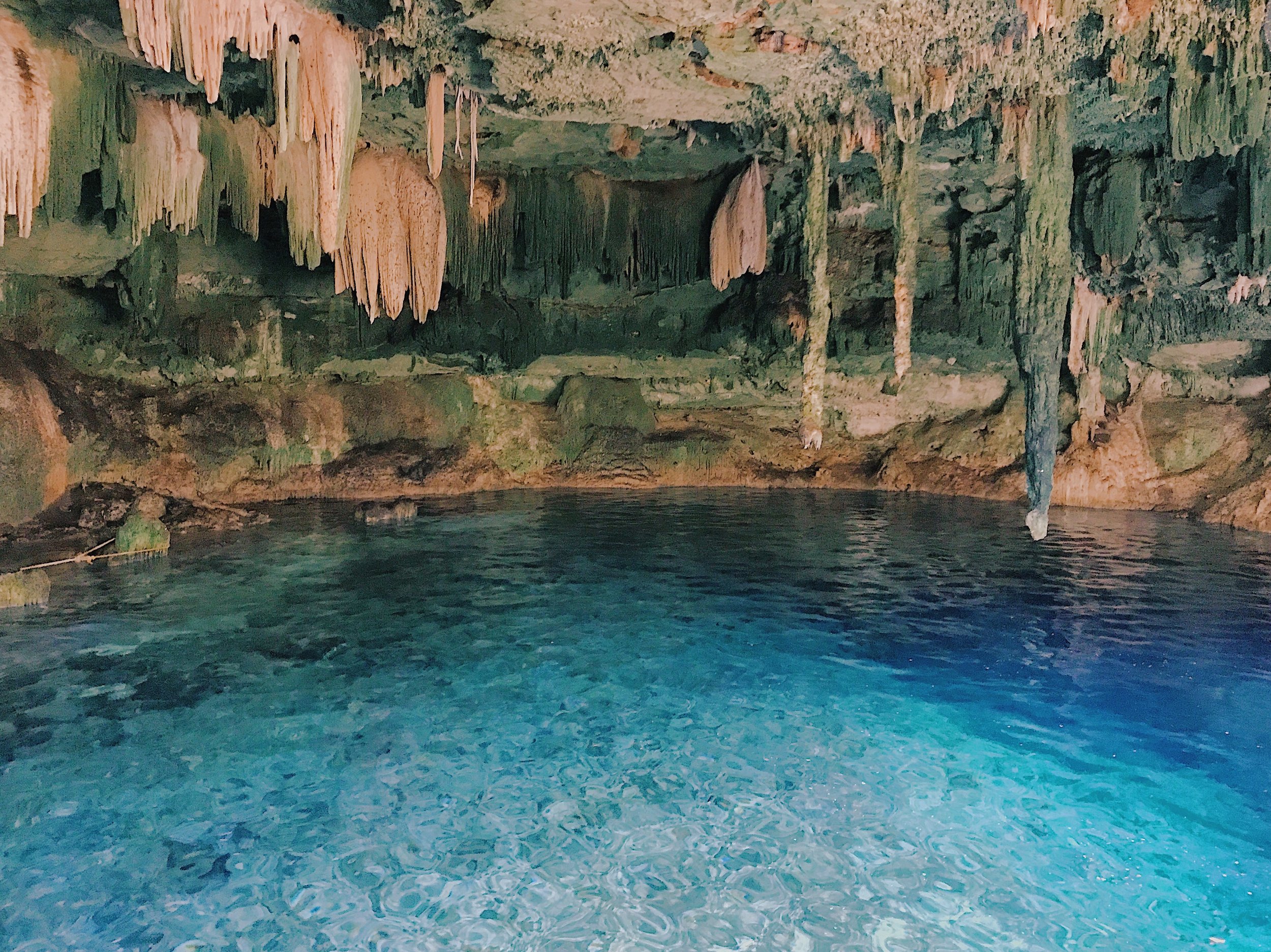ALL YOU NEED TO KNOW ABOUT MEXICO’S CENOTES
Some of the most important and unusual natural wonders across the Yucatan Peninsular are cenotes (pronounced seh-no-teys) or sinkholes. crystal-clear, turquoise lagoons of fresh water, often only accessible by climbing (or jumping) through the limestone bed-rock; they are emblematic & unique to this part of Mexico - and utterly beautiful.
Unofficial guides suggest there are up to 6000 centotes in the Peninsular, with only around 2,400 actually registered, studied & made safe(ish) for visitors (i.e. have a ladder or a rope). Broadly speaking they are categorised into 3 groups: undergound, semi-underground, and open wells.
How were they formed?
Now for all the geology lovers out there, and we know there’s a few, please feel free to correct us, but from what we’ve learnt, the formation of the very clear semi-circular ring of cenotes in the Yucatan has a pretty cool back-story.
A long (loooong) time ago the whole peninsular was underwater. The ocean sediment was gradually compressed to create limestone, which now forms the entire bedrock of the region. When the sea-level retreated, mildly acidic rainwater hitting the exposed limestone did what it does best & eroded it. Most of the surface limestone actually survived (given pretty rapid-run-off) but the subsequent, mildly acidic groundwater had longer to eat-away, creating a entire underground river & cave system (there are actually no rivers on the surface here!)
So limestone erosion - maybe not so exciting. But what about a massive asteroid impact hitting the present day Gulf of Mexico 65 million years ago, wiping out the dinosaurs & creating the Chicxlulub crater? … A bit more interesting.
When this crater was formed, the rim was subjected to some pretty insane and (literally) other-worldly physical pressures, significantly weakening it. When our slightly acidic underground rivers flowed into this mangled bed-rock the water was diverted, dammed & deflected - creating a cornucopia of caverns around the craters edge. When the sea-level further receded, the bouyancy provided to the cave roofs by the water flowing beneath disappeared, meaning many collapsed -Voila! You have a cenote.
Delightfully, the semi-circular distribution of cenotes was recognised long before the asteroid impact site was discovered. It was like a Geophysical detective story! (we’re fully geeking out here… forgive us).
Cultural significance
Aside from how gorgeous they are, and how well they lend themselves to a photo (just search cenote on instagram), cultural pre-occupation with cenotes goes far beyond the aesthetic & scientific.
The Maya placed huge significance on cenotes - the name itself is not a spanish word, but a slightly mis-heard version of the original Mayan; ‘ts’onot’ - referring to any location with accessible groundwater. They relied on cenotes for fresh water & many of the later Maya ruins are located very close to, or even built over cenotes - for obvious reasons. Their contamination (often due to human sacrifices & subsequent cholera outbreaks) were a huge reason for the collapse of some of their major cities - including Chichen Itza)
Aside from sustenance, the Maya also considered cenotes to be the entrance to the Underworld. You can still experience a tradition Mayan entry into a cenote in the outskirts of Tulum. A Shaman performs a blessing on you and - as you’re both shrouded in copal incence at the waters edge - he asks the Mayan Gods to protect you on your journey into the blue.
Our Top 5 Cenotes to Visit in the Yucatan Peninsular:
Gran Cenote, Quintana Roo
Open 8am - 5pm daily it’s worth getting here early as it can get quite crowded. It’s about a 30 minute cycle from the centre of Tulum. You do have to make your way down the side of a highway, but even Steph, who considers herself one of the least competent road-cyclists in the world, made it without incident.
The site has been developed for tourists, with lockers, showers & platforms to access the crystal blue waters. A whole bunch of turtles call this place home so make sure you shower before you enter to keep the water clean for them, especially if you’ve been using suncream or inorganic insect repellents like deet.
2. CalavEra, Quintana Roo
Conveniently located off the same highway as Gran Cenote this spot is worth pulling into. A dramatic comparison to the former, this cenote & the infrastructure around it is a little more ‘rugged’.
The water is more black than blue where it is partially enclosed, but we actually found this one a whole lot more fun. Less about posing around in turquoise water, and more about pencil jumping into narrow gaps in the limestone floor, avoiding bats & trying not to piss off the massive iguanas that bask nearby. If you want to scuba-dive the system, we were told this one was a good one to start from.
3. Tortuga, Quintana Roo
15 minutes outside of Tulum by car/taxi, this cenote has only been open for the past couple of years (2015). It costs about $350 MXN to get in. There are 3 cenotes on site: Wisho, Campana & Tortuga, with the latter being the most impressive.
4. Kankirixche, Yucatan
Open 8am - 5pm daily, this cenote is one of the most remote we got to and the most beautiful. You can reach it by car from Meridá. Once you pass through the little town of Abalá, you turn onto a dirt road which will take you another 4 miles or so. Finally you’ll see a sign and then a guy sat next to a wooden barrier (we were rather surprised to see him out there in the middle of nowhere!) It costs $30 MXN to enter. The roof of this centote is almost entirely intact with some of the most impressive stalactites we’ve ever seen emerging from it - sunlight streams through a small opening you descend through, illuminating the water to a vivid blue.
5. Cuzama, Yucatan
This is actually a collection of cenotes an hour from Meridá: Chelentún, Santa Cruz, Dzapakal, San Felipe, Ayuso, Saak-Pakal, X-tohil, Chansinic’che & Bolonchoojol. And nope - we have no idea how to pronounce all of them. Open 8am - 5pm daily, you can visit one, or many, but be aware that they are managed by different co-operative groups, some are swimmable & some are not. You can get between them via wooden cart - pulled by small horses which is worth it in itself for the experience!
To get around and see all the best cenotes in the areas you’ll need to hire a car. No worries, this is simple, have a look at some options on Rental Cars
Other Info:
Divers Alert Network (DAN)
For those who are especially intrepid (not us) you can scuba-dive the cenote system, where they are all pretty much connected by underground rivers. Make suer someone knows who you’re with and your expected dive times - they should also know the emergency hotline number: +1 919 684 9111. The Exec Director for Mexico at the time of writing is Dr. E. Cuahtémoc Sánchez.
MORE FROM THE CURIOUS TRAVEL
Up for more adventures? We’re forever writing more about our travels - Have a little look below for more inspiration











